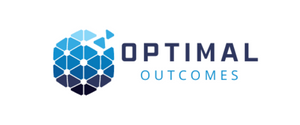Tel: 650-980-4870
Blog

Cybersecurity Compliance
Strategic Approach to Cybersecurity Compliance: A Comprehensive Framework
Phase 1: Foundation and Assessment
Regulatory Mapping and Gap Analysis
Identify Applicable Regulations: Catalog all relevant compliance requirements based on industry, geography, and business model
Current State Assessment: Conduct comprehensive audit of existing security controls, policies, and procedures
Gap Identification: Compare current capabilities against regulatory requirements to identify deficiencies
Risk Prioritization: Rank gaps based on regulatory severity, business impact, and implementation complexity
Stakeholder Alignment and Governance
Executive Sponsorship: Secure C-level commitment and adequate budget allocation
Cross-Functional Team Formation: Establish compliance committee with representatives from IT, legal, risk, and business units
Clear Accountability: Define roles and responsibilities with specific ownership for compliance outcomes
Communication Strategy: Develop messaging framework for organization-wide awareness and buy-in
Phase 2: Strategic Planning and Framework Development
Integrated Compliance Framework
Unified Approach: Map overlapping requirements across multiple regulations to avoid redundant efforts
Risk-Based Prioritization: Focus resources on highest-risk areas and most critical compliance requirements
Scalable Architecture: Design framework that can accommodate future regulatory changes and business growth
Business Integration: Align compliance activities with operational processes to minimize disruption
Policy and Procedure Development
Hierarchical Structure:
├── Corporate Security Policy (Board-approved)
├── Compliance Standards (Regulatory-specific)
├── Implementation Procedures (Operational guidance)
└── Work Instructions (Step-by-step tasks)
Technology Strategy
Compliance Management Platform: Centralized system for tracking requirements, controls, and evidence
Automated Monitoring: Deploy tools for continuous compliance monitoring and reporting
Integration Planning: Ensure new security technologies support compliance objectives
Vendor Management: Establish criteria for evaluating third-party compliance capabilities
Phase 3: Implementation and Operationalization
Phased Rollout Strategy
Critical Controls First: Implement highest-risk and most impactful controls immediately
Pilot Programs: Test new processes with limited scope before organization-wide deployment
Iterative Improvement: Use feedback loops to refine implementation approach
Change Management: Support employees through transition with training and communication
Control Implementation Best Practices
Defense in Depth: Layer multiple controls to address single compliance requirements
Automation Where Possible: Reduce manual processes to improve consistency and reduce errors
Documentation Standards: Maintain detailed records of control implementation and effectiveness
Testing and Validation: Regularly verify that controls are operating as intended
Training and Awareness Program
Role-Based Training: Customize content based on job responsibilities and access levels
Regular Updates: Keep training current with regulatory changes and emerging threats
Competency Assessment: Test understanding and track completion rates
Culture Building: Promote security awareness as shared organizational responsibility
Phase 4: Monitoring and Continuous Improvement
Continuous Monitoring Framework
Real-Time Dashboards: Provide visibility into compliance status across all requirements
Automated Alerting: Notify stakeholders of potential compliance violations immediately
Trend Analysis: Identify patterns and proactively address emerging issues
Performance Metrics: Track key indicators like control effectiveness and incident response times
Regular Assessment Cycles
Self-Assessments: Quarterly internal reviews of compliance status
Independent Audits: Annual third-party validation of compliance programs
Penetration Testing: Regular security testing to validate control effectiveness
Management Reviews: Executive-level assessment of program performance and resource needs
Incident Response and Remediation
Compliance Incident Procedures: Specific protocols for handling regulatory violations
Root Cause Analysis: Systematic investigation of compliance failures
Corrective Action Plans: Structured approach to addressing deficiencies
Regulatory Reporting: Clear processes for notifying authorities when required
Phase 5: Optimization and Evolution
Program Maturity Development
Maturity Levels:
Level 1: Reactive - Ad hoc compliance efforts
Level 2: Managed - Documented processes and controls
Level 3: Defined - Standardized organization-wide approach
Level 4: Quantitatively Managed - Metrics-driven optimization
Level 5: Optimizing - Continuous improvement and innovation
Technology Evolution
Emerging Technology Assessment: Evaluate new tools for compliance efficiency gains
Integration Optimization: Streamline tool stack to reduce complexity and costs
Artificial Intelligence: Leverage AI for predictive compliance analytics and automation
Cloud Strategy: Adapt compliance approach for cloud-first architectures
Regulatory Intelligence
Monitoring Services: Subscribe to regulatory update services and industry intelligence
Industry Participation: Engage with trade associations and regulatory bodies
Peer Networking: Share best practices with industry colleagues
Legal Counsel: Maintain relationships with specialized compliance attorneys
Critical Success Factors
Leadership and Culture
Tone at the Top: Visible executive commitment to compliance excellence
Accountability Culture: Clear consequences for compliance failures and rewards for success
Continuous Learning: Investment in employee development and industry knowledge
Ethical Foundation: Strong ethical framework supporting compliance objectives
Resource Management
Adequate Funding: Sufficient budget for technology, personnel, and external support
Skilled Personnel: Hiring and retaining qualified compliance and security professionals
Vendor Partnerships: Strategic relationships with compliance technology and service providers
Knowledge Management: Systematic capture and sharing of compliance expertise
Operational Excellence
Process Standardization: Consistent approaches across business units and geographies
Quality Assurance: Regular review and improvement of compliance processes
Efficiency Focus: Continuous optimization to reduce compliance burden
Innovation Mindset: Openness to new approaches and technologies
Common Pitfalls to Avoid
Strategic Mistakes
Checkbox Mentality: Focusing on compliance activities rather than security outcomes
Siloed Approach: Treating compliance as separate from broader security strategy
One-Size-Fits-All: Applying uniform approach without considering business context
Static Framework: Failing to adapt to changing regulatory landscape
Implementation Challenges
Insufficient Resources: Underestimating time, budget, and personnel requirements
Poor Communication: Inadequate stakeholder engagement and change management
Technology Overreliance: Expecting tools to solve process and culture problems
Documentation Gaps: Inadequate evidence collection and record keeping
Operational Issues
Compliance Fatigue: Overwhelming employees with excessive compliance requirements
Inconsistent Enforcement: Uneven application of policies and procedures
Outdated Processes: Failing to update procedures as regulations evolve
Vendor Blindness: Inadequate oversight of third-party compliance risks
Measuring Success
Quantitative Metrics
Compliance Score: Percentage of requirements fully implemented and effective
Audit Results: Number and severity of findings from internal and external audits
Incident Metrics: Frequency and impact of compliance-related security incidents
Cost Efficiency: Compliance costs as percentage of revenue or IT budget
Qualitative Indicators
Regulatory Relationships: Quality of interactions with regulatory bodies
Stakeholder Satisfaction: Feedback from business units on compliance support
Cultural Assessment: Employee attitudes toward security and compliance
Industry Recognition: Awards, certifications, and peer acknowledgment
This comprehensive approach ensures organizations not only meet current compliance requirements but build sustainable capabilities for long-term regulatory success while supporting broader business objectives.
Menu
Services
© Copyright 2023. Optimal Outcomes. All rights reserved.
